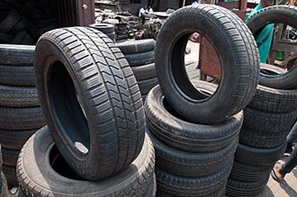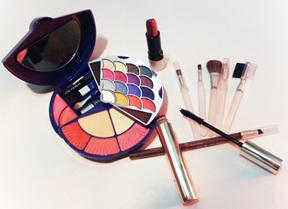An article by Daniela Castillo Monagas drew our attention to the interesting properties of eggshells. Companies, she wrote, have been developing new materials using eggshells. A renewable and circular feedstock that appears to have many applications. Eggshells are in ample supply. They represent 7.2 million tonnes of material, worldwide. As Castillo Monagas writes: an abundant and cheap, and above all renewable feedstock. She gives examples.

Stellantis – eggshells for sustainable tyres
Stellantis is the financing company behind Peugeot, Citroën, DS Automobiles, Opel, Fiat and a number of other car brands. They recently developed a way of turning eggs into a calcium carbonate tyre ingredient. This is intended to make tyres more sustainable. The calcium carbonate from the eggshell will replace the traditional tyre filler carbon black. This is a powder that results from incomplete burning of hydrocarbons, and is used to make tyres more durable. Stellantis claims the technology could lower rolling resistance by 20%; and thereby improve fuel efficiency.
Egg ‘marble’
Rania Elakalla combined waste eggshell with nutshell. This lends her a translucent, mineral-like material that resembles marble. The eggshell in this combination counts as a mineral. It is composed mostly of calcium carbonate, a material commonly used in cement. The product looks like marble. Even though it is made from two common waste byproducts of the food industry. But it doesn’t have the ecological impacts that come with mined rock.
This material can absorb an astonishing array of dyes. It can be machined, sanded, or laser cut. It can form elastic sheets, but also hard surfaces; depending on the production method. It has all the properties required for replacing many kinds of plastics.
A biobased additive for plastics
Spark Sourcing, a US based company, has patented an eggshell filler for plastics. The eggshells are powdered and used as a filler – without loss of performance of the plastic. The end result contains between 30% and 50% eggshell. Useful for companies that want to lower their carbon footprints. Even without the need to retrofit their equipment. The resulting material has a carbon footprint 70% lower than the original end product.

Eggshells in skincare and 3D printing
EGGXPERT is a Dutch company working with waste eggshell to create many different materials across industries. It specialises in using up the thin membrane tucked inside of the shell. From this, they produce a peptide used as an ingredient in skincare and beauty industries. The skincare industry generally uses peptides from petroleum feedstock and synthetic chemicals. But egg membranes offer a gentler, circular input. EGGXPERT’s renewable peptides are part of a growing market of sustainable cosmetics.
Skincare is only one of the areas covered by EGGXPERT. The company also developed a material that can be used in the 3D printing industry, to make it more sustainable. Their powders combines with biodegradable bioplastics to form materials that can be used in 3D printers. Away from the oil-based products used at present.
Eggshell bioplastic against pollution
A new eggshell-based plastic could clean up environmental pollution, and secure strategic commodities at the same time. This bioplastic, developed by Dr. Lee Wilson from the University of Saskatchewan in Western Canada, could tackle fertiliser pollution in rivers. The chitosan contained in the eggshells can absorb phosphate pollution, a huge environmental problem worldwide. It is often applied in excess and then washes out into rivers, where it will damage the environment. Also, recovering phosphate from rock can damage the environment.
But the material developed from eggshells will suck up excess phosphates from polluted water. Once saturated with phosphates, farmers can apply the biodegradable eggshell bioplastics to the soil. Here, they will break down, release their mineral load, and fertilise the soil. This innovation has attracted attention from the EU. The EU is a big agricultural producer, but heavily dependent on fertiliser from abroad.
Healing egg membranes
There are also biomedical uses of eggshell membranes. They form just a tiny portion of the eggshell. However, they have excellent properties in repairing damaged tissue. They can help in wound healing because they are rich in molecules that aid tissue repair, including collagen and cysteine. A research team at UCL has developed a method for extracting the eggshell membrane intact; without changing its chemical properties. The material extracted in this way could even have more properties, like biodegradable packaging material. Used in wrapping, cling film, doggy poo bags, disposable wet wipes, and teabags.
The future
Eggshells are a niche feedstock today. But ecological and geopolitical pressures could soon favour faster adoption. With climate change and new global trade patterns, countries might evaluate where their raw materials are coming from. Then, widely available byproducts like eggshells could become much-used materials.
Interesting? Then also read:
Nanocomposites, precision materials
New biobased materials will carry the breakthrough for the biobased economy
Long live Europe, trend 5: decentralisation of industry in a biobased society
